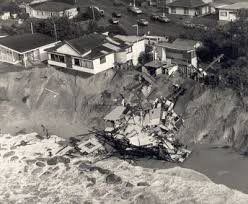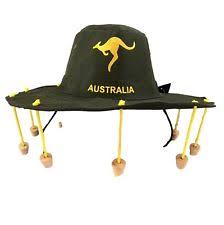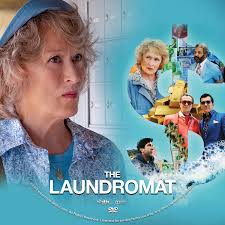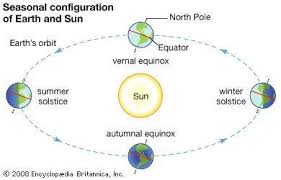Sleep was elusive. Fevered dreaming stood in its place. [1]

Just suppose for a moment that, within the Australian Labor Party (ALP), a subgroup was once created for those with a particular interest in coastal erosion.
The people who join this movement have no desire to subvert or depart from the principles of the ALP; they are through and through ‘labor’ people by inclination.
It’s just that, within the broader Labor Party, they want to be seen to represent the particular interests of people around Australia who are worried about coastal erosion.
It’s not made explicit, but in the beginning most of those who join the movement do so because they believe that a tailor-made organisation will help with an overall ecological, conservationist approach.
The movement goes so well that the ALP’s administration agrees that those who wish to do so can have their membership fees diverted to and used by the new entity. With the increased organisational capacity that results, it becomes – in effect – a political party within a political party.
It adopts the name Labor for the Coast (LfC). It holds conferences, produces publications, and develops its own positions on issues relating to coastal erosion.
As time passes, the range of issues with which LfC becomes concerned expands. There are people concerned with rising sea levels and the impact on areas settled by human habitation – including on the value of property. There are those concerned with retention of the ecology of coastal regions. There are those who want to see coastal areas more developed, and those who don’t. There are those concerned about industrial run-off; and wind farms; and maritime infrastructure.
But whatever their specific interest in the matter, members of the organisation are still, first and foremost, supporters of the Australian Labor Party.
Time passes. At some future Federal Election, Labor for the Coast announces that it intends to run its own candidates in seats where its issues are of a particularly high profile. This causes a problem for the ALP, which has to decide whether to step aside and give free rein to LfC, or to run their own candidates in what might be called ‘three-cornered contests’.
More time passes. The range of issues with which LfC purports to have a special interest, and special expertise, grows broader. Sometimes there are so many complex and conflicting aspects to the management of Australia’s coastline that it isn’t clear what LfC’s position actually is.
Some of its members fear that its original purpose – to protect the coastline – has been watered down or perverted.
The public profile given to particular aspects of the challenge varies from year to year. After traumatic and damaging events which have particular impact on coastal areas, such as cyclones, floods and bushfires, support for the party tends to increase.

But one thing never varies and that is the close political, philosophical and organisational relationship between the ALP and Labor for the Coast. Whether in government or opposition, the larger party and its smaller, more specialised partner work together in what becomes known as the Alliance Government or the Alliance Opposition.
Time passes. One of the curious things that happens is that the policies of LfC seem to take on their own credibility and have their own status – quite separate from the positions or priorities of the ALP. It’s as if the prosecution of beliefs and policies by what is still a partial subgroup of the senior partner will assuredly lead to action by the greater whole if the Alliance wins government.
Retrospective analysis of the results of one particular Federal Election show that in the twelve seats won by LfC, a critical number of votes were cast because of LfC’s proposed policies relating to residential development, coastal wetlands and the management of run-off. These voters failed to recognise that the ALP had no specific policy positions on these more detailed issues. What this meant was that, when the Alliance won government – thanks in part to the seats won by LfC – there was in fact no corporate or party-wide commitment to those proposed policies.
The practice that developed was for the ALP and LfC to enter into a negotiated agreement, the terms of which were not publicly revealed, relating to Ministerial positions and policy matters to which the Alliance Government would commit.
People who voted for LfC for particular reasons were in the dark as to the status of the promised policies and programs relating to those matters. Nevertheless the organisation prospered. For a period of time LfC had branches in every state and territory – even in the ACT which, apart from Jarvis Bay, has no coastline at all. At its peak, LfC had federal representatives from each State and the Northern Territory.
Time passed. The management of Australia’s coastline failed to improve from the point of view of all the major interest groups.
Gradually, the senior partner in this curios political arrangement came to realise that issues relating to Australia’s coastline and its management were so important as to require its serious and focused consideration. There seemed no good reason why coastal management should be the preserve of or the responsibility of a particular subgroup. It should not be farmed out in this way.
LfC became a decidedly rickety construct. It only survived at all through the next period because of the myth it had built up that it was the only group defending the interests of Australia’s coastline against the people of the inland.
The expertise on coastal management issues which had gravitated for some years to LfC was readopted into the senior partner. LfC was gradually whittled away as the ALP recognised the importance and potential value of having its own focus on the challenges besetting Australia’s coastline.
The writing was on the wall for LfC when, in a couple of jurisdictions, it merged back into the ALP. There was a curious, misty period (described by one writer as ‘furtive’) in which LfC operated exclusively at the state level, being unable or unwilling to get members elected to Federal Parliament.
Its credibility and reputation were damaged by errors of judgement made by some of its leaders who, during the full flood of LfC’s status, were among the top dogs in national politics.
The future of LfC depended on just one jurisdiction for some years. Even this was not due to the inherent strength of its policy positions and any uniqueness with which it supported them in government. Rather, as historians have since pointed out, the quarantining of people of a particular bent from the ALP itself meant that the LfC had a significant impact on the factional balance within the parent party.
Time passed. The LfC was further eroded.
There was confusion about exactly who LfC was trying to represent. Was it the people who lived and worked on the coast, or the broader group who cared about management of the coastal fringe? Either way it was expecting too much of one organisation to represent all of those who lived in coastal areas: the young and the old, environmentalists and those involved in real estate development or heavy industry, those with bank loans and those dependent upon investment income.

Like King Canute, those clinging on to LfC pointed out that all of its Parliamentary representatives were people from coastal areas. Other people wondered whether having no representatives from the kinds of community in which one third of Australia’s population live was an advantage or disadvantage for LfC’s policy thinking.
Historically there was little evidence of LfC parliamentarians delivering services or infrastructure for coastal people unless it was supported by the ALP. This is the natural circumstance in which a junior party to an Alliance will find itself. But if all of the LfC initiatives are supported by the ALP, what is the point of the LfC?
Before too long Alliance Governments were a thing of the past. Thereafter, whenever the Labor Party was more popular than the Liberal Party or independents, the government installed was badged simply ‘ALP’.
Life then seemed much clearer – including for people who cared about coastal management, – and the choice between the major parties much simpler.
And it was no longer possible for people’s vote to be won over in an election campaign by ‘promises’ made by a subgroup of the ALP and to which the ALP itself owed no loyalty or commitment.
– – – –
Then it was morning and such fevered speculation could end.

[1] Although he is entirely innocent of any knowledge of this piece, I am indebted to Stephen James Holt, the author of an article about politics which appeared in the Canberra Times on 15 August 2018.























 Let me try my hand at cricket prognostication.
Let me try my hand at cricket prognostication.







 ‘Twas a dangerous cliff, as they freely confessed,
Though to walk near its crest was so pleasant:
But over its terrible edge there had slipped
A duke and many a peasant;
So the people said something would have to be done.
But their projects did not at all tally:
Some said, “Put a fence around the edge of the cliff”
Some, “An ambulance down in the valley.”
But the cry for the ambulance carried the day.
For it spread to the neighbouring city:
A fence may be useful or not, it is true,
But each heart became brimful of pity
For those who had slipped o’er that dangerous cliff,
And the dwellers in highway and alley
Gave pounds or gave pence, not to put up a fence,
But an ambulance down in the valley.
“For the cliff is alright if your careful,” they said,
“And if folks even slip or are dropping,
It isn’t the slipping that hurts them so much
As the shock down below - when they’re stopping,”
So day after day when these mishaps occurred,
Quick forth would the rescuers sally
To pick up the victims who fell off the cliff,
With their ambulance down in the valley.
Then an old man remarked, “It’s a marvel to me
That people give far more attention
To repairing results than to stopping the cause,
When they’d much better aim at prevention.
Let us stop at its source all this mischief, cried he.
“Come neighbours and friends, let us rally :
If the cliff we will fence, we might almost dispense
With the ambulance down in the valley.
“Oh, he’s a fanatic.” the others rejoined:
“Dispense with the ambulance Never!
He’d dispense with all charities, too, if he could:
No, no! We’ll support them forever.
Aren’t we picking up folks just as fast as they fall?
And shall this man dictate to us? Shall he?
Why would people of sense stop to put up a fence?
While their ambulance works in the valley?”
But a sensible few who are practical too,
Will not bear with such nonsense much longer
They believe that prevention is better than cure
And their party will soon be the stronger
Encourage them, then with your purse, voice and pen
And (while other philanthropists dally)
They will scorn all pretence, and put up a stout fence
On the cliff that hangs over the valley.
‘Twas a dangerous cliff, as they freely confessed,
Though to walk near its crest was so pleasant:
But over its terrible edge there had slipped
A duke and many a peasant;
So the people said something would have to be done.
But their projects did not at all tally:
Some said, “Put a fence around the edge of the cliff”
Some, “An ambulance down in the valley.”
But the cry for the ambulance carried the day.
For it spread to the neighbouring city:
A fence may be useful or not, it is true,
But each heart became brimful of pity
For those who had slipped o’er that dangerous cliff,
And the dwellers in highway and alley
Gave pounds or gave pence, not to put up a fence,
But an ambulance down in the valley.
“For the cliff is alright if your careful,” they said,
“And if folks even slip or are dropping,
It isn’t the slipping that hurts them so much
As the shock down below - when they’re stopping,”
So day after day when these mishaps occurred,
Quick forth would the rescuers sally
To pick up the victims who fell off the cliff,
With their ambulance down in the valley.
Then an old man remarked, “It’s a marvel to me
That people give far more attention
To repairing results than to stopping the cause,
When they’d much better aim at prevention.
Let us stop at its source all this mischief, cried he.
“Come neighbours and friends, let us rally :
If the cliff we will fence, we might almost dispense
With the ambulance down in the valley.
“Oh, he’s a fanatic.” the others rejoined:
“Dispense with the ambulance Never!
He’d dispense with all charities, too, if he could:
No, no! We’ll support them forever.
Aren’t we picking up folks just as fast as they fall?
And shall this man dictate to us? Shall he?
Why would people of sense stop to put up a fence?
While their ambulance works in the valley?”
But a sensible few who are practical too,
Will not bear with such nonsense much longer
They believe that prevention is better than cure
And their party will soon be the stronger
Encourage them, then with your purse, voice and pen
And (while other philanthropists dally)
They will scorn all pretence, and put up a stout fence
On the cliff that hangs over the valley.
 “When the Winter solstice happens in the Southern Hemisphere, the South Pole is inclined about 23.4° away from the Sun, with its vertical rays are overhead at their northernmost position, the Tropic of Cancer (23°27′ N).”
“When the Winter solstice happens in the Southern Hemisphere, the South Pole is inclined about 23.4° away from the Sun, with its vertical rays are overhead at their northernmost position, the Tropic of Cancer (23°27′ N).”

 Lilian Alpha
Lilian Alpha How Grown Was My Lily
How Grown Was My Lily How does your gordon grow?
How does your gordon grow? My lily of the lamplight
My lily of the lamplight “A Song Of Love Is A Sad Song – “
“A Song Of Love Is A Sad Song – “ Towering inferno
Towering inferno How Green Was My Lily
How Green Was My Lily Water lily
Water lily Lily Marline
Lily Marline

 (L to R): Parri, Tadryn, Pella, Tauri
(L to R): Parri, Tadryn, Pella, Tauri (from 2014)
(from 2014)
 It seems to be a little hoya?
It seems to be a little hoya?